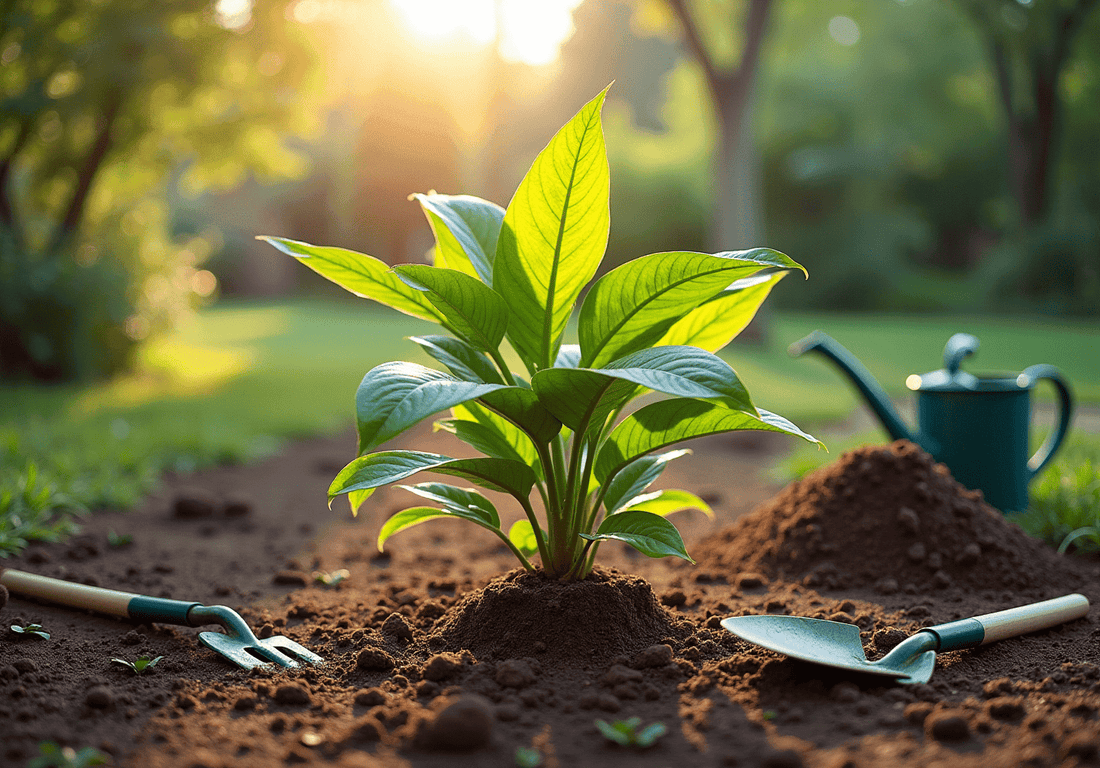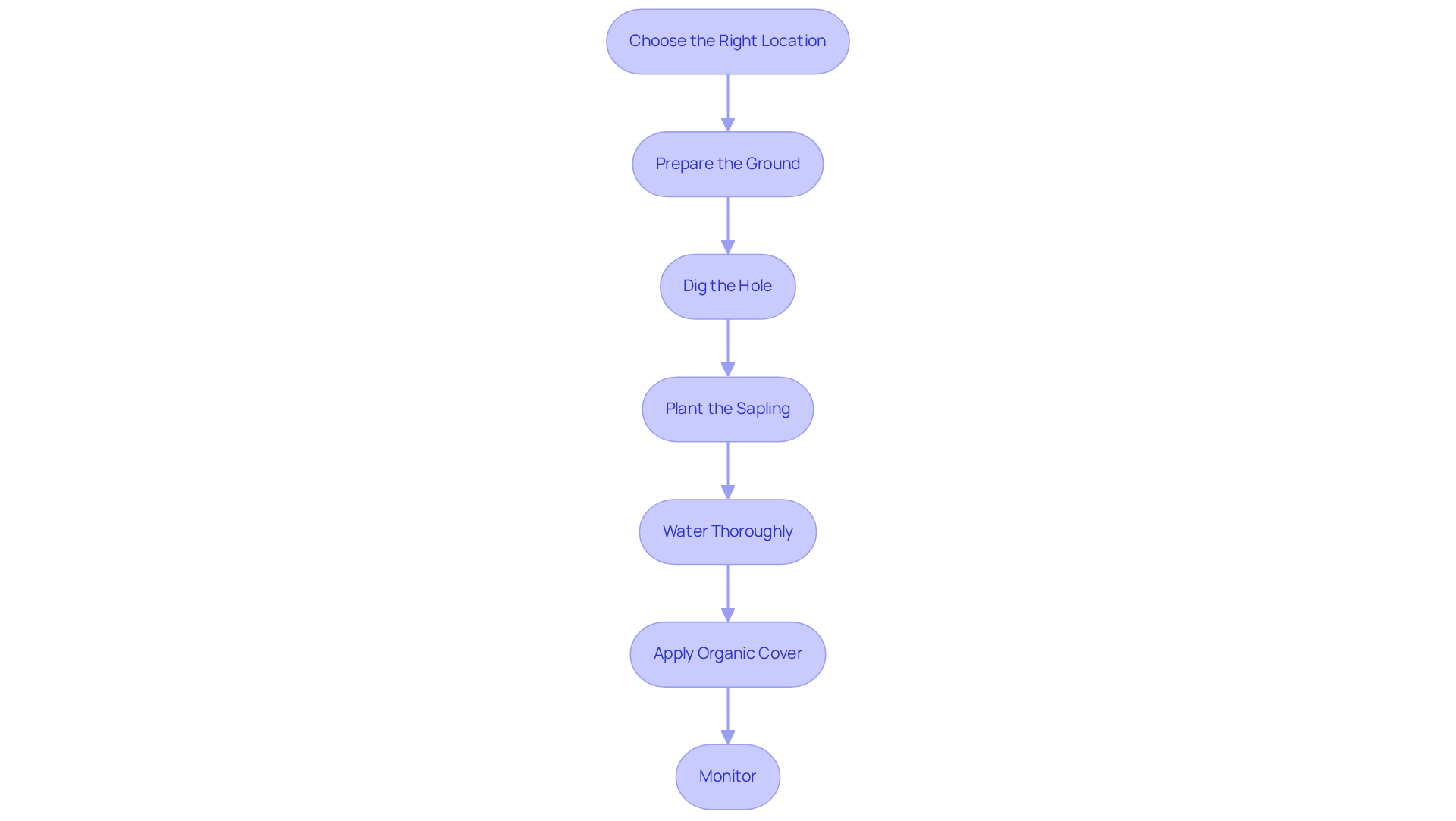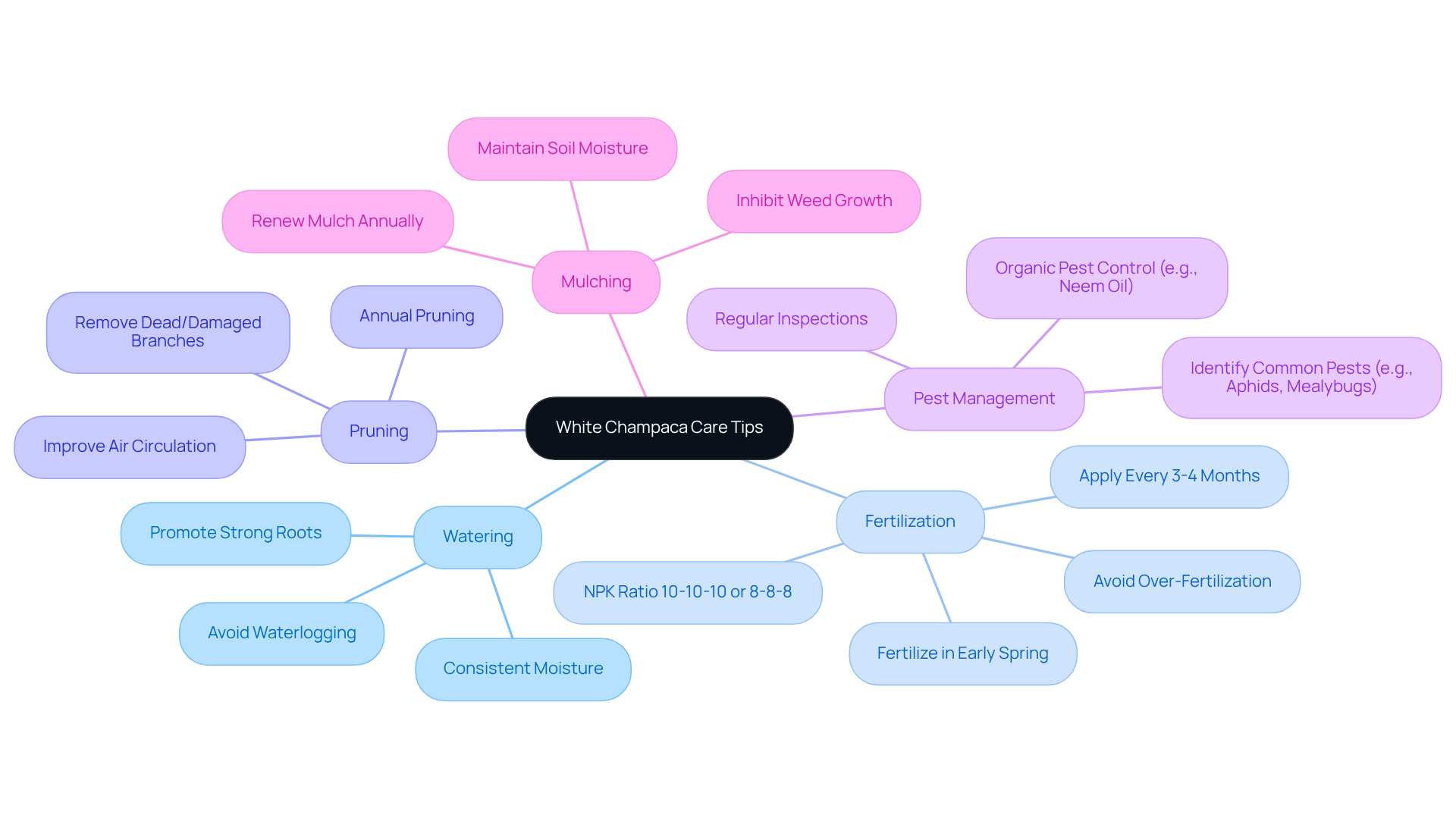
Grow White Champaca: Essential Steps for Home Gardeners
Share
Cultivating white champaca, a fragrant tree renowned for its stunning blooms, provides home gardeners with a unique opportunity to enhance their outdoor spaces. This guide explores the essential steps necessary for successfully growing and maintaining this tropical beauty, from understanding its specific growing conditions to addressing common challenges.
However, as many enthusiasts discover, nurturing this plant can present its own set of complications.
🌱Want to grow a White Champaca in your garden?
Explore White Champaca trees for sale at Everglades Farm - shipped directly from Florida.
1. Understand the Growing Conditions for White Champaca
White champaca (Michelia alba) thrives in warm, humid environments that are characteristic of tropical and subtropical climates. Understanding the essential growing conditions is crucial for successful cultivation:
- Temperature: Ideal temperatures range from 20°C to 35°C (68°F to 95°F). It is important to protect the plant from frost, as it is not frost-tolerant.
- Sunlight: This tree prefers full sun to partial shade, ideally receiving 6-8 hours of direct sunlight daily. In hotter climates, morning sun with afternoon shade is optimal.
- Medium: Use well-draining, nutrient-rich material with a slightly acidic to neutral pH (around 6.0 to 7.0). A mix of garden soil, organic compost, and perlite in a 2:1:1 ratio is effective. Ensuring adequate drainage is crucial to prevent root rot, which is vital for the health of tropical plants.
- Humidity: High humidity levels are beneficial. In drier areas, consider misting the leaves or using a humidity tray to maintain moisture.
Incorporating insights from horticulturists, it is noted that maintaining high humidity and proper temperature is essential for the vitality of tropical plants. By ensuring these conditions are met, you can create a flourishing environment for your white champaca plant.

2. Plant White Champaca: Step-by-Step Instructions
To successfully plant your White Champaca, follow these essential steps:
-
Choose the Right Location: Select a site that receives ample sunlight and has good air circulation, while also being sheltered from strong winds. For tropical fruit trees like Soursop, it is crucial to ensure the location is warm and protected from frost.
-
Prepare the Ground: Test the pH levels, aiming for a range of 5.0-7.5, and modify it as necessary. Utilize well-draining, nutrient-rich, loamy soil that is slightly acidic, and incorporate organic compost to enhance soil nutrients and structure. This preparation is essential for the healthy development of tropical fruit plants.
-
Dig the Hole: Create a hole that is twice as wide and deep as the root ball of the plant. This facilitates better root expansion and growth, which is vital for establishing a strong foundation.
-
Plant the Sapling: Place the sapling in the middle of the hole, ensuring the top of the root ball is even with the ground surface. Fill the hole with earth, gently packing it down to eliminate air pockets. This step is critical for preventing root rot, especially in tropical climates.
-
Water Thoroughly: After planting, water the plant deeply for 10-15 minutes to help settle the soil around the roots. Ensure proper drainage to prevent waterlogging, which can damage the plant. For Soursop and similar plants, consistent moisture is essential during the establishment phase.
-
Apply Organic Cover: Add a layer of organic cover around the base of the plant to retain moisture, suppress weeds, and regulate ground temperature. Consider layering soil amendments and adding gravel to encourage development, as this can enhance moisture retention and nutrient availability.
-
Monitor: For the first year, water the plant 1-2 times a week with 1-2 gallons of water, and closely observe the organism to ensure it receives adequate moisture, adjusting based on weather conditions. Routine observation is crucial to avoid pest problems and guarantee vigorous development. Implement pest management practices, such as inspecting for common pests and using organic treatments if necessary.
By following these steps, you will create a solid base for your white champaca plant, encouraging healthy development and vibrant flowers, while also implementing best practices that aid other tropical fruit plants like Soursop.

3. Maintain Your White Champaca: Care and Maintenance Tips
To maintain a healthy white champaca tree, it is essential to follow specific care tips that ensure its vitality and beauty.
-
Watering: Regular watering is crucial, especially during dry spells. The soil should remain consistently moist, but not waterlogged. Thorough watering promotes strong root development, which is vital for the plant's stability and overall health.
-
Fertilization: A balanced, slow-release fertilizer with an NPK ratio of 10-10-10 or 8-8-8 should be applied every 3-4 months throughout the growing season. It is important to avoid over-fertilization, as this can lead to excessive foliage growth at the expense of flower production. Fertilizing in early spring, before bud break, is particularly beneficial for tropical plants.
-
Pruning: Annual pruning is recommended to remove dead or damaged branches and to shape the plant. This practice not only encourages healthy growth but also improves air circulation, thereby reducing the risk of disease.
-
Pest Management: Regular inspections for pests such as aphids and mealybugs are necessary. Employing organic pest control methods, like neem oil, can effectively manage infestations without harming beneficial insects.
-
Mulching: Renewing the mulch layer each year helps maintain soil moisture and inhibits weed growth. This practice not only conserves water but also enhances soil quality as the mulch decomposes.
By adhering to these maintenance suggestions, you can ensure that your white champaca tree flourishes, showcasing its stunning flowers and contributing to a vibrant garden.

4. Troubleshoot Common Problems with White Champaca
Here are some common problems you may encounter with your White Champaca and how to troubleshoot them:
-
Yellowing Leaves: This may indicate overwatering or nutrient deficiencies. Check the soil moisture and adjust your watering schedule, aiming for about 0.5 cups of water every 9 days. If nutrient deficiency is suspected, consider applying a balanced fertilizer.
-
Leaf Drop: Dropping leaves may result from environmental stress, such as sudden temperature changes or inadequate watering. Insufficient light can also contribute to this issue. Ensure the plant is in a stable environment and receives at least six hours of direct sunlight each day, adjusting watering as necessary.
-
Pest Infestations: Look for signs of pests like aphids or mealybugs. Treat infestations promptly with organic insecticides or by washing the pests off with a strong jet of water.
-
Poor Flowering: If your tree is not flowering, it may not be receiving enough sunlight or nutrients. Ensure it gets adequate light and consider fertilizing to promote blooming.
-
Root Rot: This occurs when the soil is too wet. Ensure proper drainage and reduce watering frequency if you notice signs of root rot. Furthermore, to maintain the health of your white champaca, repot it after it doubles in size or annually.
By being proactive and addressing these common issues, you can help your white champaca thrive.
Conclusion
Growing white champaca can be a rewarding endeavor for home gardeners, offering not only stunning foliage but also fragrant flowers that enhance any garden space. By understanding the specific growing conditions and following the outlined steps for planting, care, and troubleshooting, gardeners can create an ideal environment for this beautiful tree to flourish.
The article details essential factors such as temperature, sunlight, and soil requirements that are crucial for the successful cultivation of white champaca. It provides a comprehensive step-by-step guide for planting, emphasizing the importance of:
- Location
- Soil preparation
- Ongoing maintenance practices like watering, fertilization, and pest management
Attention to these details ensures the vibrant growth and health of the plant while addressing common issues that may arise, such as yellowing leaves or root rot.
Ultimately, cultivating white champaca is not just about following a set of instructions; it is about fostering a connection with nature and enhancing the beauty of one’s surroundings. By implementing these gardening tips and being proactive in care, anyone can enjoy the lush beauty and delightful aroma of white champaca in their home garden. Embrace the journey of gardening and create a thriving oasis that showcases the charm of this exquisite plant.
Transform Your Garden with the Exquisite White Champaca!
Start your journey today and cultivate beauty and fragrance right in your backyard.
🛒 Buy a White Champaca Tree
🌱 About Everglades Farm
Frequently Asked Questions
What climate is ideal for growing white champaca?
White champaca thrives in warm, humid environments typical of tropical and subtropical climates.
What temperature range is best for white champaca?
The ideal temperature range for white champaca is between 20°C to 35°C (68°F to 95°F). The plant should be protected from frost, as it is not frost-tolerant.
How much sunlight does white champaca need?
White champaca prefers full sun to partial shade, ideally receiving 6-8 hours of direct sunlight daily. In hotter climates, morning sun with afternoon shade is optimal.
What type of soil is suitable for white champaca?
A well-draining, nutrient-rich medium with a slightly acidic to neutral pH (around 6.0 to 7.0) is suitable. A mix of garden soil, organic compost, and perlite in a 2:1:1 ratio is effective.
How important is humidity for white champaca?
High humidity levels are beneficial for white champaca. In drier areas, misting the leaves or using a humidity tray can help maintain moisture.
What is crucial for the health of tropical plants like white champaca?
Maintaining high humidity and proper temperature is essential for the vitality of tropical plants, including white champaca.

